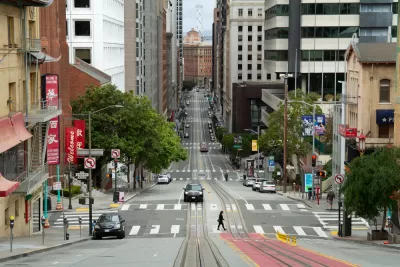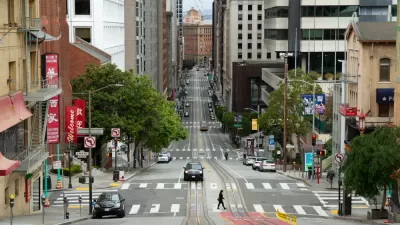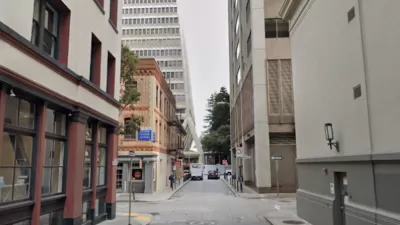The recovery of U.S. downtowns is happening at widely different paces depending on which city you consider.

A recent analysis by the Institute of Governmental Studies at the University of California, Berkeley compares the recovery of downtowns using new data provided by mobile phones to expand beyond the typical indicators of downtown vitality: office vacancy rates, public transit ridership, and retail spending.
The study finds wide variation in downtown recoveries, ranging from a low of 31 percent of pre-pandemic levels in San Francisco to a high of 155 percent in Salt Lake City. The key factors influencing these outcomes, according to the study, are “population and business densities, commuter mode shares particularly high car use, along with presence of industry sectors that are continuing to support remote work (such as tech and finance),” according to the policy brief that supplements an infographic-oriented website to share the information released with the study.
The release of the study has inspired some local media coverage, including an article by Mike Rogoway for the Oregonian examining Portland, Oregon’s “sluggish” recovery (only San Francisco and Cleveland fared worse, according to the study). An article by Snejana Farberov for the New York Post was quick to point out how many cities are doing worse than New York recovering from the pandemic. An article by Roland Li for the San Francisco Chronicle recently made a similar point without citing the Berkeley study.
For more research into the uneven recovery from the pandemic, see also research published by the Brookings Institution in June 2022, which also identifies winners and losers among metropolitan areas in the new, post-pandemic normal.
FULL STORY: Death of Downtown?

Alabama: Trump Terminates Settlements for Black Communities Harmed By Raw Sewage
Trump deemed the landmark civil rights agreement “illegal DEI and environmental justice policy.”

Planetizen Federal Action Tracker
A weekly monitor of how Trump’s orders and actions are impacting planners and planning in America.

Why Should We Subsidize Public Transportation?
Many public transit agencies face financial stress due to rising costs, declining fare revenue, and declining subsidies. Transit advocates must provide a strong business case for increasing public transit funding.

Understanding Road Diets
An explainer from Momentum highlights the advantages of reducing vehicle lanes in favor of more bike, transit, and pedestrian infrastructure.

New California Law Regulates Warehouse Pollution
A new law tightens building and emissions regulations for large distribution warehouses to mitigate air pollution and traffic in surrounding communities.

Phoenix Announces Opening Date for Light Rail Extension
The South Central extension will connect South Phoenix to downtown and other major hubs starting on June 7.
Urban Design for Planners 1: Software Tools
This six-course series explores essential urban design concepts using open source software and equips planners with the tools they need to participate fully in the urban design process.
Planning for Universal Design
Learn the tools for implementing Universal Design in planning regulations.
Caltrans
Smith Gee Studio
Institute for Housing and Urban Development Studies (IHS)
City of Grandview
Harvard GSD Executive Education
Toledo-Lucas County Plan Commissions
Salt Lake City
NYU Wagner Graduate School of Public Service





























